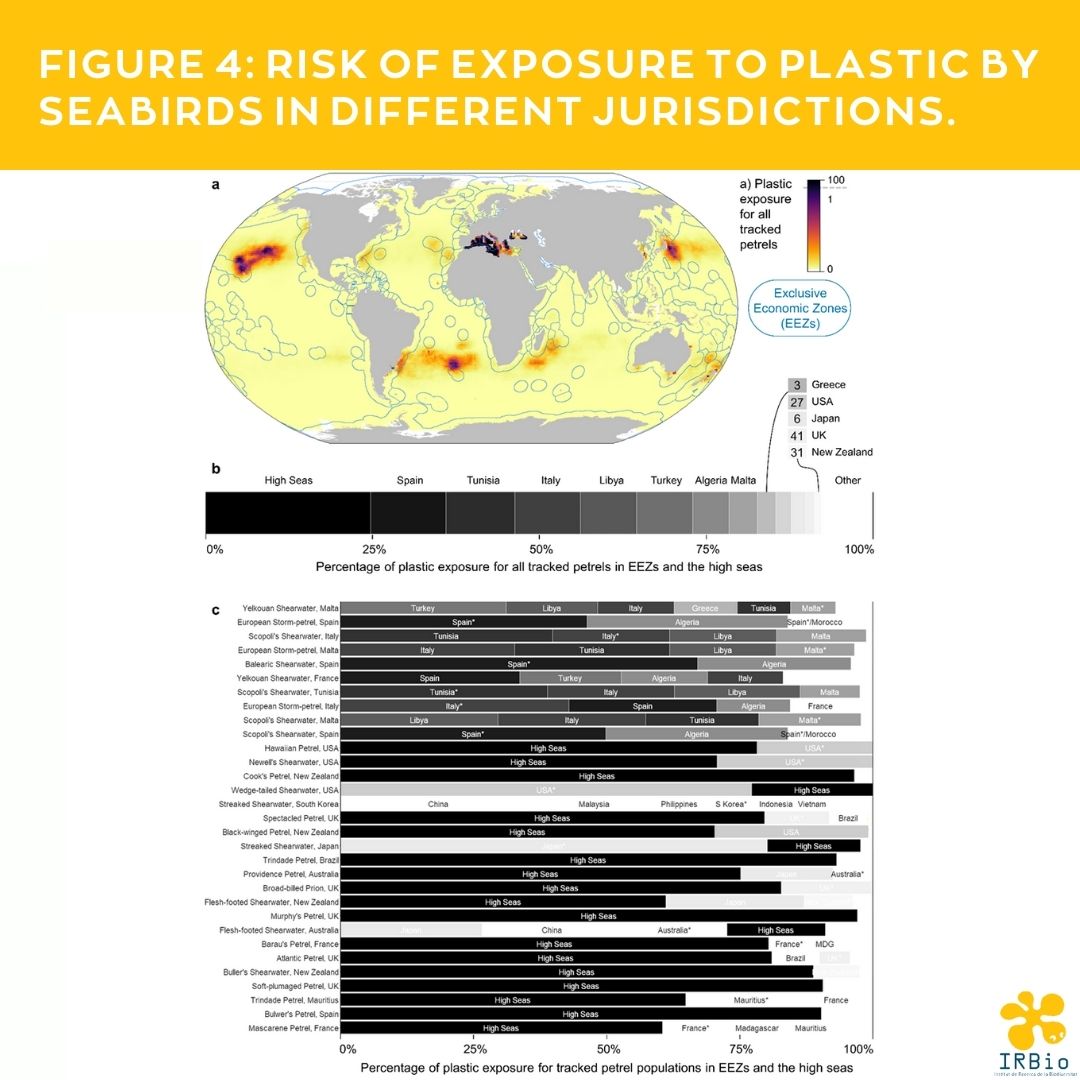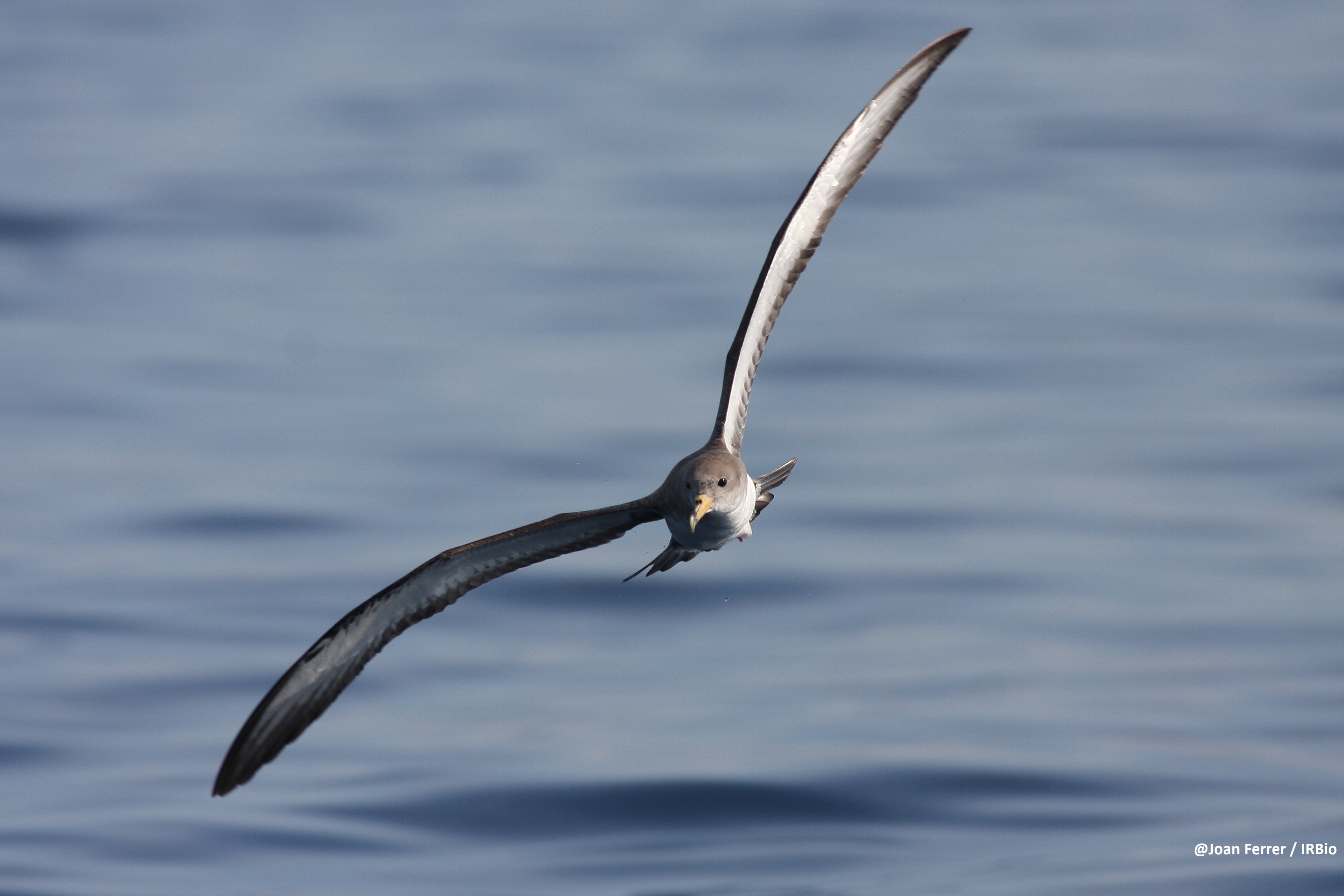Global assessment of marine plastic exposure risk for ocean birds.
Professors Jacob Gonzàlez-Solís, Raül Ramos and their team participate in an article published today in the journal Nature Communications: Global assessment of the risk of exposure to marine plastic for ocean birds.
Millions of tons of plastic are currently distributed irregularly throughout the world's oceans. Pelagic birds are one of the organisms most affected by this pollution of human origin mainly due to their consumption and entanglement with these materials.
The work addresses the spatio-temporal overlap between the abundance of seabirds and plastics which, until now, was unknown. A large volume of data has been collected on the distribution of dozens of different bird species as well as the distribution of plastics in the ocean.
The risk of exposure to plastic varies greatly between species and populations, and between breeding and wintering periods. The risk of exposure is disproportionately high for threatened species.
Specifically, they have estimated the current exposure risk of such emblematic species as the Mediterranean vulture (Puffinus yelkouan) and the gray vultures of the Mediterranean, Atlantic and Cape Verde (Calonectris diomedea, C. borealis and C. edwardsii). Two risk zones of high exposure have been identified in the Mediterranean and the Black Sea, which affect many of our seabirds, already threatened per se. 
FIGURE 3: Risk of exposure to marine plastics specific for each season. Scores during the breeding (gray circles) and non-breeding (black circles) periods for the 20 seabird populations with the most differences between periods (grey lines).
The results indicate that mitigating plastic pollution only in the economic exclusion zones (EEZ) of the country where the species reproduce would not adequately protect the majority of these throughout their annual cycle.

FIGURE 4: Risk of exposure to plastic by seabirds in different jurisdictions.
For each seabird population, the percentage of exposure risk that occurs in each EEZ and offshore is provided to facilitate the targeting of mitigation and policy efforts to key areas.
Marine vertebrates and plastic debris in the oceans are globally distributed, highly mobile, and cross political boundaries within and outside national jurisdictions. Therefore, mitigating plastic pollution from marine and terrestrial sources will require efforts directed at multiple jurisdictions in countries and on the high seas. International cooperation, collaboration, resource mobilization and information sharing are key to tackling marine plastic pollution by limiting the production of plastic waste that continues to increase, improving the management of this waste, and cleaning the already existing plastics.
Congratulations to all the authors and the Marine Bird Ecology Group of the Faculty of Biology and the Biodiversity Research Institute (IRBio) of the University of Barcelona!
Pictures: Joan Ferrer, Mediterranean gray vultures, Calonectris diomedea
